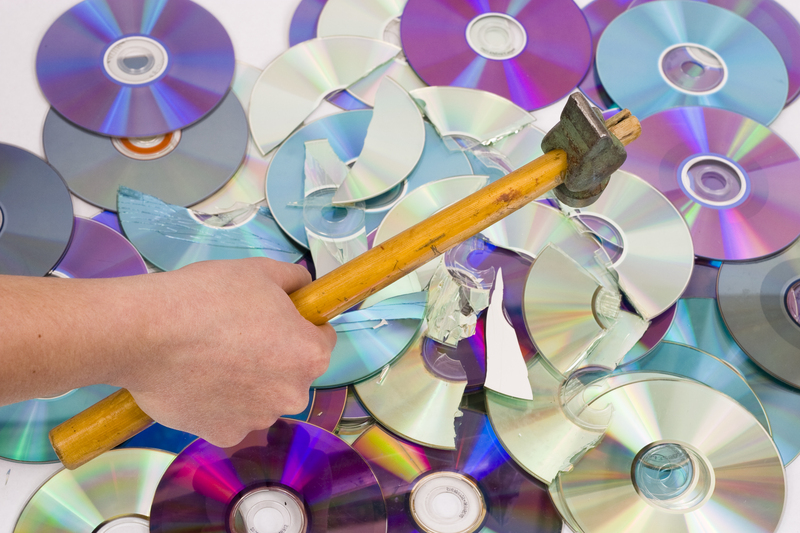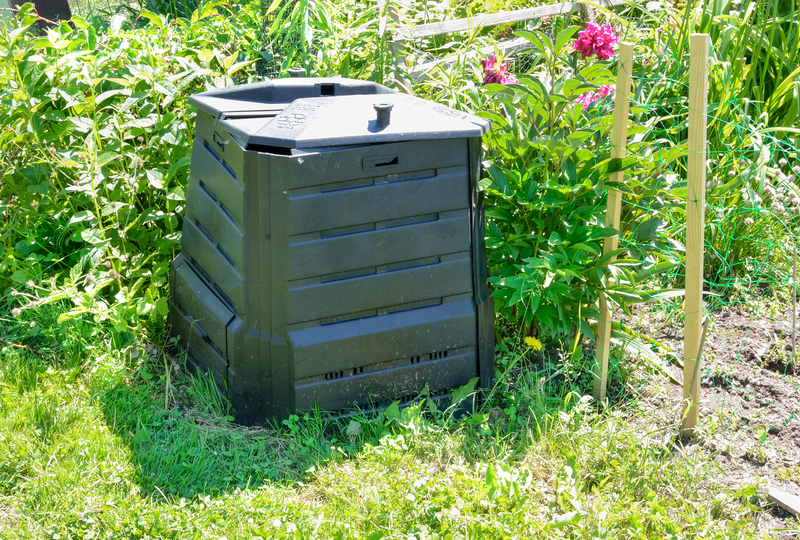Find Out Where to Recycle Your Large Household Furniture
If you've ever tried moving to a new place or decluttering your home, you know how challenging it can be to part ways with your large household furniture. Instead of sending it to the landfill, many environmentally conscious homeowners are now looking for sustainable solutions. This comprehensive guide will *help you discover the best ways and places to recycle large furniture*, ensuring it gets a second life while reducing environmental impact.

Why Is Large Furniture Recycling Important?
- Reduces landfill waste: Furniture like sofas, mattresses, and wardrobes are bulky. Recycling helps divert these large items from overflowing landfills.
- Conserves resources: Furniture contains valuable materials such as wood, metal, and fabric that can be repurposed or recycled.
- Cuts down on pollution: Disposing of furniture improperly can release toxic materials. Recycling ensures safe processing and minimizes pollution.
- Supports local communities: Donated or upcycled furniture can benefit families in need or support local non-profits.
What Types of Large Household Furniture Can Be Recycled?
Many of your large household furniture items are eligible for recycling or reuse. Common recyclable pieces include:
- *Couches and sofas*
- *Dining tables and chairs*
- *Bed frames and mattresses*
- *Wardrobes and dressers*
- *Desks and office furniture*
- *Bookcases and shelving units*
However, not all facilities accept every item. Always check with your local recycler for their specific large furniture recycling guidelines.
How to Prepare Your Furniture for Recycling
Before you seek out places to recycle old furniture, prep your items properly to increase the likelihood of acceptance and safe handling.
- Clean thoroughly: Remove dirt, pet hair, and debris.
- Disassemble if possible: Take apart parts like legs, drawers, or shelves to facilitate transport and recycling.
- Remove non-recyclable materials: Separate fabric, foam, and plastics if possible (check recycler requirements).
- Inspect for pests: Ensure your furniture is free of bed bugs or infestations.
Where to Recycle Large Household Furniture
There are several reliable ways to recycle old large household furniture responsibly. Here are the leading options:
1. Local Municipal Waste Programs
Many cities and counties offer bulk waste pickup or large item recycling days for residents. Check your municipality's waste management website for information about:
- Scheduled bulky waste collection: Many programs collect large furniture curbside on specific days.
- Drop-off locations: Bring your items to designated facilities, often for free or a small fee.
- Special recycling events: Look for seasonal events that focus on collecting hard-to-recycle goods, including oversized furniture.
Tip: Some municipalities require advance reservations or stickers for large furniture pickup, so plan ahead!
2. Nonprofit Organizations and Charities
Donating large household furniture to nonprofits is an excellent choice if your items are in good, usable condition. These organizations often redistribute furniture to families in need, sell them to support social programs, or recycle components responsibly. Popular options include:
- Habitat for Humanity ReStores: Accept donations of large household furniture and build affordable housing from the proceeds.
- Goodwill and The Salvation Army: Many locations offer free pickup for qualifying items.
- Local shelters or churches: They may need beds, couches, or tables for their programs.
Remember: Call ahead to confirm acceptance and schedule a pickup.
3. Retailers and Manufacturer Take-back Programs
More furniture retailers are offering take-back or recycling programs. When buying new furniture, ask if the retailer will haul away and recycle your old item. Some retailers with established recycling initiatives include:
- IKEA: Offers Furniture Take Back in some regions so your old furniture gets refurbished or recycled.
- Mattress retailers: Many participate in mattress recycling programs, especially in states with mattress stewardship laws.
- Local furniture stores: Some chains offer responsible disposal for a fee or as an incentive.
Tip: Inquire about the environmental impact and destination of your recycled item.
4. Junk Removal and Specialized Recycling Services
Numerous private companies specialize in picking up and recycling large furniture. They handle the heavy lifting, eco-friendly disposal, and sometimes refurbishing or donation. Notable providers include:
- 1-800-GOT-JUNK?
- College Hunks Hauling Junk
- LoadUp
Although there's typically a fee, *these services can save you time and ensure sustainable disposal*.
5. Household Hazardous and E-Waste Centers (for Special Furniture)
If your large furniture contains electronics, batteries, certain foams, or chemicals, take it to a facility equipped for handling these materials safely. Examples include:
- TV stands with integrated electronics
- Adjustable beds with electric motors
- Furniture with built-in lighting
These centers ensure hazardous components are recycled without harming the environment.
What Happens to Large Furniture After Recycling?
Ever wondered beyond the curb? Here's what typically happens to recycled large household furniture:
- Disassembly: Furniture is broken down into wood, metal, plastic, and fabric components.
- Material processing: Recyclable elements are sorted, cleaned, and sent to appropriate facilities.
- Repurposing: Wood might be chipped for mulch, fabric repurposed for insulation, and metals melted down for new products.
- Donation or resale: Items in good shape may be resold or given to those in need.
Tips for Recycling Large Household Furniture Responsibly
- Check with multiple resources: Some items may be eligible for donation, while others need special recycling.
- Remove personal items: Empty drawers and compartments before recycling.
- Avoid illegal dumping: Never leave furniture on curbs or parks outside of designated collection times. There can be fines.
- Consider upcycling: *Transform old furniture into something new and functional* with DIY creativity.
Common Questions About Recycling Furniture
Can I leave my furniture on the curb?
Not always. Most cities have rules about curbside furniture recycling. Contact your local authorities for proper procedures.
Will my old mattress be recycled with my other furniture?
Often, mattress recycling is handled separately due to different processing needs. Look for dedicated mattress recycling programs in your area.
What if no one will take my large item?
Try:
- Posting on online marketplaces like Craigslist, Facebook Marketplace, or Buy Nothing groups
- Contacting local artists or repair shops for upcycling projects
- Using specialized removal services as a last resort
Can broken furniture be recycled?
Yes, many programs accept damaged or broken large household furniture as long as it's made from recyclable materials. Remove hazardous parts before disposal.
Does recycling large furniture cost money?
Recycling is often free through donation or municipal programs, but some private haulers or specialty recyclers charge a fee--especially for items requiring extra handling.
The Environmental and Community Benefits of Recycling Your Furniture
- Reduces resource extraction: By reusing materials in large furniture recycling, there's less demand for raw wood, metals, and plastics.
- Supports the circular economy: Recycled materials gain new life, reducing overall consumption.
- Builds strong communities: Gently used furniture can make a difference for neighbors in need.

Key Takeaways: Where to Recycle Your Large Household Furniture
- Start locally - Check municipal waste management and curbside pick-up schedules.
- Consider donation - If your items are usable, non-profits will often accept or even collect them.
- Use retailer or manufacturer programs - Especially when buying new furniture.
- Contact professional recycling services - For quick and eco-friendly disposal of bulky items.
- Practice safe removal - Clean, disassemble, and check for recyclability of all components.
Online Tools and Resources to Find Furniture Recycling Sites Near You
- Earth911 (earth911.com): Enter your zip code and item to find local recycling centers.
- Recycling Locator from EPA: A federal tool for locating facilities near you.
- Local government websites: City or county waste management portals list options for residents.
- Nonprofit directories: Search for furniture pickup and donation programs via Habitat for Humanity or local charities.
Ready to start? Recycling your large household furniture isn't just kind to the planet--it's an opportunity to help your community and give treasured possessions a second chance at life. Use the resources above and do your part to build a cleaner, greener, and more sustainable world!